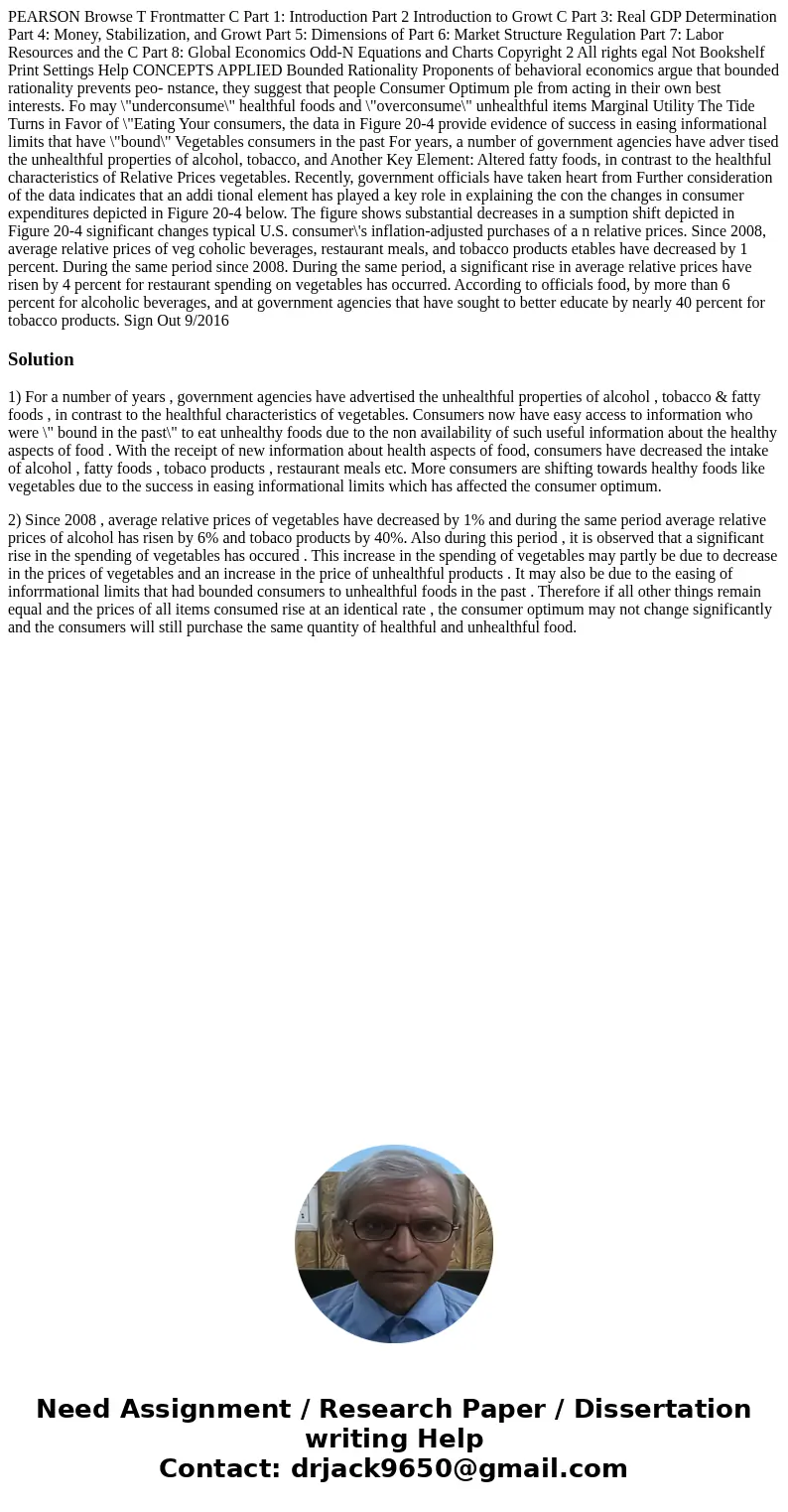PEARSON Browse T Frontmatter C Part 1: Introduction Part 2 Introduction to Growt C Part 3: Real GDP Determination Part 4: Money, Stabilization, and Growt Part 5: Dimensions of Part 6: Market Structure Regulation Part 7: Labor Resources and the C Part 8: Global Economics Odd-N Equations and Charts Copyright 2 All rights egal Not Bookshelf Print Settings Help CONCEPTS APPLIED Bounded Rationality Proponents of behavioral economics argue that bounded rationality prevents peo- nstance, they suggest that people Consumer Optimum ple from acting in their own best interests. Fo may \"underconsume\" healthful foods and \"overconsume\" unhealthful items Marginal Utility The Tide Turns in Favor of \"Eating Your consumers, the data in Figure 20-4 provide evidence of success in easing informational limits that have \"bound\" Vegetables consumers in the past For years, a number of government agencies have adver tised the unhealthful properties of alcohol, tobacco, and Another Key Element: Altered fatty foods, in contrast to the healthful characteristics of Relative Prices vegetables. Recently, government officials have taken heart from Further consideration of the data indicates that an addi tional element has played a key role in explaining the con the changes in consumer expenditures depicted in Figure 20-4 below. The figure shows substantial decreases in a sumption shift depicted in Figure 20-4 significant changes typical U.S. consumer\'s inflation-adjusted purchases of a n relative prices. Since 2008, average relative prices of veg coholic beverages, restaurant meals, and tobacco products etables have decreased by 1 percent. During the same period since 2008. During the same period, a significant rise in average relative prices have risen by 4 percent for restaurant spending on vegetables has occurred. According to officials food, by more than 6 percent for alcoholic beverages, and at government agencies that have sought to better educate by nearly 40 percent for tobacco products. Sign Out 9/2016
1) For a number of years , government agencies have advertised the unhealthful properties of alcohol , tobacco & fatty foods , in contrast to the healthful characteristics of vegetables. Consumers now have easy access to information who were \" bound in the past\" to eat unhealthy foods due to the non availability of such useful information about the healthy aspects of food . With the receipt of new information about health aspects of food, consumers have decreased the intake of alcohol , fatty foods , tobaco products , restaurant meals etc. More consumers are shifting towards healthy foods like vegetables due to the success in easing informational limits which has affected the consumer optimum.
2) Since 2008 , average relative prices of vegetables have decreased by 1% and during the same period average relative prices of alcohol has risen by 6% and tobaco products by 40%. Also during this period , it is observed that a significant rise in the spending of vegetables has occured . This increase in the spending of vegetables may partly be due to decrease in the prices of vegetables and an increase in the price of unhealthful products . It may also be due to the easing of inforrmational limits that had bounded consumers to unhealthful foods in the past . Therefore if all other things remain equal and the prices of all items consumed rise at an identical rate , the consumer optimum may not change significantly and the consumers will still purchase the same quantity of healthful and unhealthful food.

 Homework Sourse
Homework Sourse